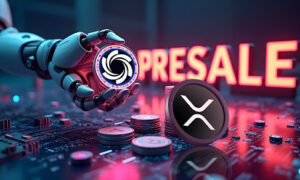Bull and bear markets are common terms in the world of trading and finance and it is important to understand their meaning to best engage with the trading of assets. A bull market refers to a market in which shares or other assets are rising in price while a bear market refers to a market in which shares or other assets are decreasing in price. These terms get their names from the manner in which these animals act in the wild. A bull’s horns rise as it attacks whereas a bear’s claws descend as it swipes. A market is not necessarily always in a bull or bear state. Sometimes a market is consistent in general value with small fluctuations up and down.
Bull and bear market states do not only apply to traditional investments like stocks and bonds. Cryptocurrencies also experience bull and bear markets. Academics have noted that, “The market for cryptocurrencies has experienced extremely turbulent conditions in recent times, and we can clearly identify strong bull and bear market phenomena”. The academics studied the markets of Bitcoin, Ethereum and Litecoin and through their analysis they noted that bull markets are more efficient than bear markets. Market efficiency refers to the extent to which prices in the market are a reflection of all of the information which is available that is relevant to the market. As such, if a market is entirely efficient there would be no over or undervalued cryptocurrencies because their price is an accurate representation of the information which is available.
What is the Result of a Bear Market?
A bear market is a market which is steadily trending downwards over time. A bear can also be a description of someone who is pessimistic about the state of the market and is expecting the market to decline or continue to decline in the future. A pessimistic attitude towards the market can in turn contribute to further market decline in the same manner that an optimistic attitude can contribute toward an incline. The result of a bear market tends to be a general decrease in value of a broad spectrum of stocks or cryptocurrencies. However, bull and bear markets are not irregular and a market will tend to cycle between a bear and bull state.
The crypto market is currently bearish and this has occurred after many cryptocurrencies reached their all time peaks in November of 2021. Many of the biggest cryptocurrencies have seen a continuous decline since this point with Bitcoin and Ethereum having dropped in value by 58% and 56% respectively over the last six months. While these cryptocurrencies have seen a significant drop in value they are not going anywhere any time soon. The same cannot necessarily be said for other crypto currencies and crypto projects as some have not been able to survive the bear market. Similarly, others will not be able to continue for much longer as investors continue to lose faith in their ability to hold value.
Ndau is a self-sovereign cryptocurrency which uses a staking mechanism to reward owners of ndau to hold their currency. A self-sovereign crypto currency is one that is owned and controlled by an individual without the need for a custodian. A custodian is a third party who controls an asset on behalf of an individual. This could be an institution such as a bank, which controls money or a corporation, such as Meta which controls data and information. This can be convenient but it is by no means ideal from the perspective of security. Self-sovereign cryptocurrencies like ndau provide owners with complete control over their crypto assets and do not require an individual to trust any central authority in this regard.
Final Thoughts
A market will typically oscillate between a bull and bear state with an overall bullish trend. This means that while markets do see severe drops in their value, such as in 2008 they will ultimately recover from these occurrences. This is not always the case and bear markets tend to lead to certain companies and crypto ventures never being able to recover. Ndau seeks to buck this trend by providing its owners with a means of storing value for the long term. Additionally, ndau is a self-sovereign currency which means that ownership does not require any custodianship and that individual owners have complete control over their assets.





























